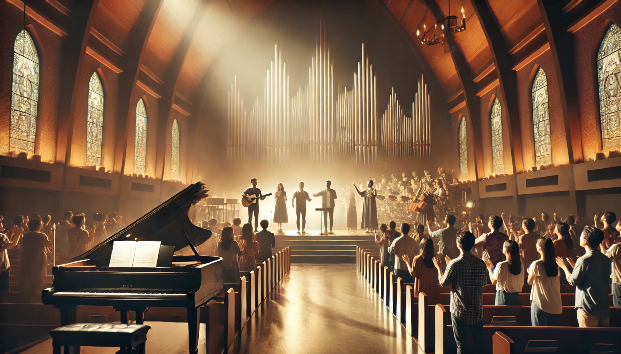Modern Interpretations of Traditional Hymns: Blending the Old with the New

Traditional hymns have stood the test of time, carrying profound theological depth and spiritual richness. However, in today’s diverse musical landscape, many artists and worship leaders are reimagining these timeless hymns by blending them with contemporary styles. This fusion preserves the powerful messages of the past while making them more accessible and engaging for modern congregations.
In this post, we’ll explore how traditional hymns are being reinterpreted, why this trend is growing, and how it impacts worship and faith communities worldwide.
Why Reimagine Traditional Hymns?
Traditional hymns are deeply rooted in Christian heritage, often featuring poetic lyrics and rich theology. However, many younger generations struggle to connect with their original melodies or instrumentation. Updating these hymns allows churches to:
- Preserve Their Theological Depth: By keeping the lyrics intact while modernizing the music, worshipers can still experience the hymn’s biblical and doctrinal richness.
- Make Worship More Engaging: Contemporary arrangements with fresh instrumentation and rhythms resonate with a broader audience.
- Bridge Generational Gaps: Blending old and new helps unite congregations by honoring tradition while embracing innovation.
- Adapt to Diverse Worship Styles: Whether in a high-energy worship band or an acoustic setting, reimagined hymns can fit various church environments.
How Traditional Hymns Are Being Modernized
1. Contemporary Arrangements
Many hymns are being transformed by adjusting the chord structures, tempo, and instrumentation. Worship artists like Chris Tomlin, Shane & Shane, and Hillsong Worship have adapted classics like Amazing Grace and It Is Well with modern musical elements, making them more accessible to today’s worshipers.
2. Adding a New Chorus or Bridge
Some artists preserve the original verses but introduce a contemporary chorus or bridge. This helps build a dynamic flow in the song while reinforcing the hymn’s core message. A great example is My Chains Are Gone, an adaptation of Amazing Grace that adds a powerful bridge to emphasize freedom in Christ.
3. Blending Hymns with Worship Songs
Another effective approach is to integrate traditional hymns into modern worship songs. This technique allows familiar lyrics to merge seamlessly with newer songs, creating a worship experience that resonates with both traditional and contemporary audiences.
4. Acoustic and Folk-Inspired Renditions
Some musicians opt for stripped-down, folk-style versions of hymns, emphasizing raw, heartfelt worship. This approach maintains the hymn’s reverence while making it more intimate and personal.
5. Gospel and R&B Influences
Many traditional hymns are also being reinterpreted with gospel, jazz, or R&B influences. Artists like Tasha Cobbs Leonard and Kirk Franklin have successfully revived hymns with soulful arrangements that bring an uplifting, spirit-filled energy to worship.
Popular Modern Interpretations of Hymns
Here are a few traditional hymns that have been reimagined beautifully:
- Amazing Grace (My Chains Are Gone) – Chris Tomlin
- It Is Well – Bethel Music
- Come Thou Fount (I Will Sing) – Chris Tomlin
- O Praise the Name (Anástasis) – Hillsong Worship
- How Great Thou Art – Carrie Underwood (Gospel rendition)
- Nothing But the Blood – Matt Redman (Contemporary adaptation)
These interpretations retain the hymns’ theological significance while infusing them with fresh musical inspiration.
The Impact of Modernized Hymns on Worship
1. Fostering a Deeper Connection
Blending the old with the new allows worshipers to engage with sacred texts in a relatable way. Many people experience a deeper connection when the music aligns with their worship style.
2. Encouraging Congregational Participation
Modern arrangements make hymns easier to sing in group settings, helping congregations participate more fully in worship.
3. Honoring Church Heritage
By keeping traditional hymns alive in contemporary worship, churches honor their historical roots while remaining relevant to today’s believers.
4. Expanding Worship Diversity
Modern interpretations introduce hymns to new cultural and stylistic expressions, making worship more inclusive and globally inspired.
Conclusion
The blending of traditional hymns with contemporary music breathes new life into timeless songs of faith. By updating these hymns while preserving their rich messages, churches can engage worshipers across generations and cultures. Whether through modern arrangements, added choruses, or genre fusions, this trend continues to enhance the worship experience while keeping the legacy of hymns alive for years to come.
Do you have a favorite modern interpretation of a hymn? Share it in the comments below!



Comments
This post currently has no comments.